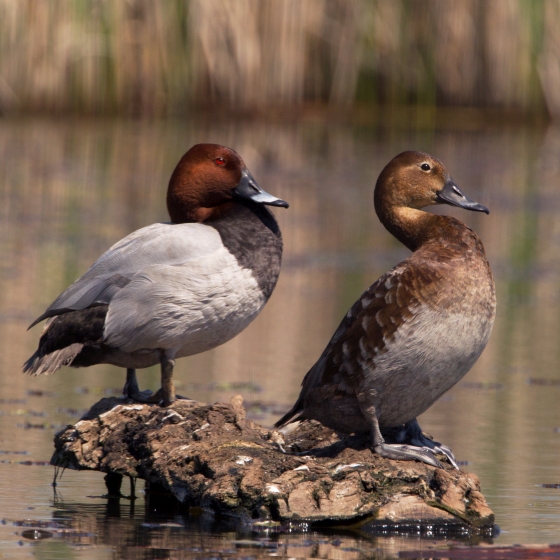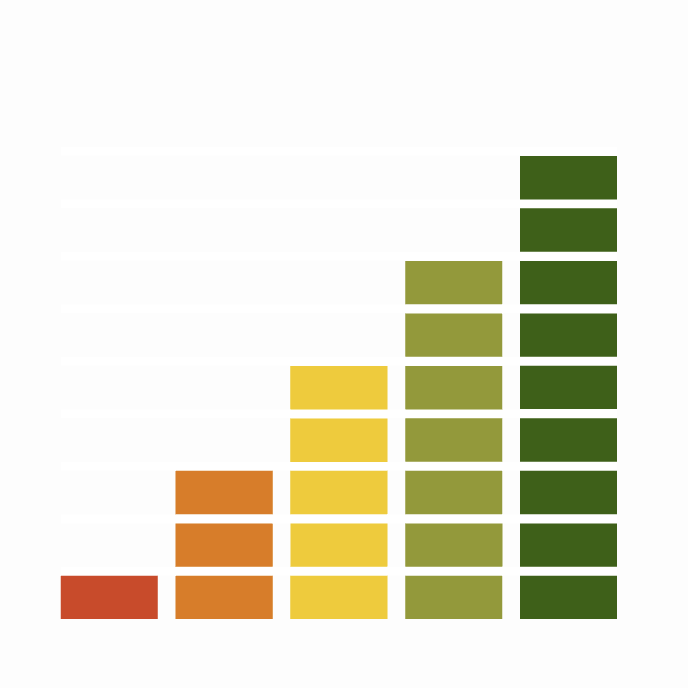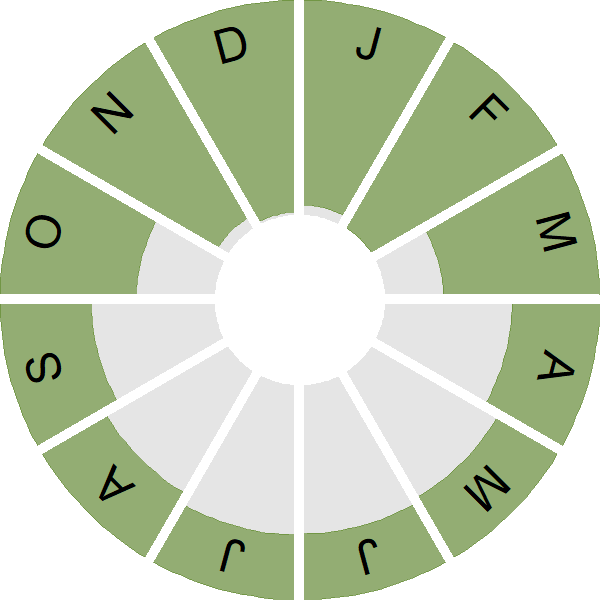Pochard

Introduction
Pochard are found on waterbodies across the UK that are deep enough to accommodate their diving behaviour in search of food.
The Pochard is a scarce breeding bird in the UK, with around 700 pairs thought to breed here and mostly in England. During the winter months this small population is swollen by birds escaping freezing conditions on the Continent, which can see UK Pochard numbers climb as high as 30,000 individuals.
The Wetland Bird Survey shows a declining trend in numbers, that is thought to be partly driven by milder winters keeping more waterbodies ice free on the Continent. This ensures feeding opportunities closer to the Pochard breeding areas and makes a crossing of the North Sea unnecessary for many.

Key Stats
Identification
ID Videos
This section features BTO training videos headlining this species, or featuring it as a potential confusion species.
Diving Ducks
Songs and Calls
Call:
Status and Trends
Conservation Status
Population Change
Numbers of breeding Pochard have remained relatively stable, with some fluctuations, at around 600–800 pairs, for the ten years to 2019 following a strong increase since it was first monitored by the RBBP in 1986 (Eaton et al. 2021). However, this population increase contrasts with a range contraction in the UK, with a 39% decrease in the number of occupied squares since the 1968–72 Breeding Atlas (Balmer et al. 2013). Widespread declines and range losses have occurred in Europe and the species is classed as Vulnerable on the IUCN Red List (BirdLife International 2021).
Distribution
The winter distribution of the Pochard is concentrated in lowland areas, where waterbodies have high nutrient status, and the species is generally absent from the acidic, nutrient-poor waterbodies of the uplands. Rich lakes are also preferred for breeding and the map shows the concentration of breeding birds in eastern lowland areas of England.
Occupied 10-km squares in UK
2007/08–10/11
or view it on Bird Atlas Mapstore.
2008–11
or view it on Bird Atlas Mapstore.
European Distribution Map
Distribution Change
There has been a 21% contraction in winter range in Britain & Ireland since the 1981–84 Winter Atlas. The loss is most prominent in Ireland, reflecting a long-term decline in the wintering population.
Change in occupied 10-km squares in the UK
from 1981–84 to 2007–11
or view it on Bird Atlas Mapstore.
from 1968–72 to 2008–11
or view it on Bird Atlas Mapstore.
Seasonality
Pochards are present throughout the year; there is a small breeding population and the species is most likely to be seen in winter.
Weekly pattern of occurrence
The graph shows when the species is present in the UK, with taller bars indicating a higher likelihood of encountering the species in appropriate regions and habitats.

Movement
Britain & Ireland movement
Foreign locations of birds ringed or recovered in Britain & Ireland
Dots show the foreign destinations of birds ringed in Britain & Ireland, and the origins of birds ringed overseas that were subsequently recaptured, resighted or found dead in Britain & Ireland. Dot colours indicate the time of year that the species was present at the location.
- Winter (Nov-Feb)
- Spring (Mar-Apr)
- Summer (May-Jul)
- Autumn (Aug-Oct)

European movements
EuroBirdPortal uses birdwatcher's records, such as those logged in BirdTrack to map the flows of birds as they arrive and depart Europe. See maps for this species here.
The Eurasian-African Migration Atlas shows movements of individual birds ringed or recovered in Europe. See maps for this species here.
Biology
Productivity and Nesting
Nesting timing
Egg measurements
Clutch Size
Survival and Longevity
Survival is shown as the proportion of birds surviving from one year to the next and is derived from bird ringing data. It can also be used to estimate how long birds typically live.
View number ringed each year in the Online Ringing Report.
Lifespan
Survival of adults
Survival of juveniles
Biometrics
Wing length and body weights are from live birds (source).
Wing length
Body weight
Ring Size
Classification, names and codes
Classification and Codes
- Order: Anseriformes
- Family: Anatidae
- Scientific name: Aythya ferina
- Authority: Linnaeus, 1758
- BTO 2-letter code: PO
- BTO 5-letter code: POCHA
- Euring code number: 1980
Alternate species names
- Catalan: morell cap-roig
- Czech: polák velký
- Danish: Taffeland
- Dutch: Tafeleend
- Estonian: punapea-vart
- Finnish: punasotka
- French: Fuligule milouin
- Gaelic: Lach-dhearg-cheannach
- German: Tafelente
- Hungarian: barátréce
- Icelandic: Skutulönd
- Irish: Póiseard
- Italian: Moriglione
- Latvian: brunkaklis, raudava
- Lithuanian: rudagalve antis
- Norwegian: Taffeland
- Polish: glowienka (zwyczajna)
- Portuguese: zarro
- Slovak: chochlacka sivá
- Slovenian: sivka
- Spanish: Porrón europeo
- Swedish: brunand
- Welsh: Hwyaden Bengoch
- English folkname(s): Red-headed/Blue Poker
Research
Causes of Change and Solutions
Causes of change
Increases in Pochard numbers in western Europe in the twentieth century are possibly linked to the eutrophication of water bodies which resulted in increased availability of food and cover (Fox et al. 2016). Subsequent widespread declines in Europe may have been caused by a number of factors, among which are abandonment of fish farming and declines in water quality, hyper-eutrophication, increases in the abundance of fish species which compete for food resources, increased predation from non-native species such as mink, and losses of gull colonies (which help improve breeding productivity by providing protection from predators) (Fox et al. 2016, Mischenko et al. 2020). However, the stable trend in the UK suggests that the factors affecting the species in Europe are currently not a significant issue here and it remains unclear what are the main drivers of population trends in the UK.
More Evidence
More evidence from Conservation Evidence.com
Partners
Citing BirdFacts
If you wish to cite particular content in this page (e.g. a specific value) it is best to use the original sources as linked in the page. For a more general citation of the whole page please use: BTO (20XX) BirdFacts Species: profiles of birds occurring in the United Kingdom. BTO, Thetford (www.bto.org/birdfacts, accessed on xx/xx/xxxx).

